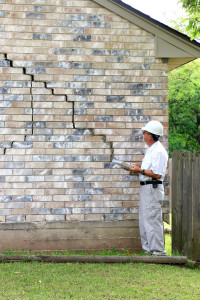 For many homeowners, a home inspection can be a stressful process.
For many homeowners, a home inspection can be a stressful process.
What if the inspector finds something seriously wrong? What if the maintenance work they’ve put into the house over the years has been done poorly? What if the house doesn’t live up to their expectations?
In truth, the home inspection doesn’t need to be nerve wracking. After all, the intention of the process is to make sure the home is safe and suitable for occupation, either by the current inhabitants or a potential new owner. Any issues that crop up can then be fixed properly, instead of being ignored until they get worse.
It’s a good thing.
But home inspectors do often come across problems in the homes they inspect. Here are 10 of the most common issues we see.
- Faulty Electrical Wiring
Faulty wiring is the cause of many house fires, most of which are in fact avoidable. This is also one of the most common issues that home inspectors find when they inspect the exterior and interior wiring of a house, including the fuse box and electrical breakers.
The most common issues are improper and undersized electric wiring, followed by reverse polarity wiring. Reversed polarity occurs when the hot wires and neutral wires are placed in the wrong terminal in the outlet. This can cause a short in the system and create a spark.
Another common error involves attaching two electrical circuits at a single electric breaker, known as double tapped breakers.
- Drainage Problems
Water drainage issues vary from case to case, but it is a serious problem and one that can cause significant damage if not dealt with properly. In some homes, water may get into the basement whenever it rains. In others, the problem may be unsealed cracks on the walls, allowing water to seep into the house.
Or, the problem may be a poor drainage system or a poor gutter system, all of which can cause problems like mold and water damage in the house. The good news is that all of these problems can be fixed easily, but the work needs to be done ASAP because water damage problems can quickly multiply over time if not address.
- Improper Ventilation
Most problems with fan ventilation usually involve bathroom vent fans, although kitchen vent hoods are sometimes a problem as well. When a bathroom fan is installed in a manner that does not vent in the exterior of the house, moisture from the bathroom can leak into the attic and other spaces when it can cause molds and contribute to the overall deterioration of the home.
The fix to this problem is simple: Correctly install the fan so that it vents to the exterior of the home.
- Roofing Problems
Roof problems are most homeowners’ worst nightmare, and for good reason. Not only can roof damage contribute to significant damage to both the interior and exterior of the house, repairing a damaged roof is one of the most expensive projects that most homeowners will ever see.
At the most basic level, an improperly installed roofing system can easily result in premature aging of the roof, and that’s before water intrusion does any damage to the interior. This part of the house is responsible for protecting us from harsh weather elements, including wind, heat, cold and even rain, so proper installation and protection here is critical before potential damage becomes widespread.
- Plumbing Problems
Poorly designed plumbing systems are considered a health hazard, and major problems usually involve leaking toilets, leaking faucets and even leaks around the hot water heater caused by broken pipes and valves.
And these leaks are about more than sewage. Leakage problems can cause mold, fungus and mildew to develop. Additionally, they can rot wood panels, floorboards and wall structure pieces. What’s more, improper plumbing may result in water contamination when water meant for consumption gets mixed with other water sources.
- Overall Maintenance Problems
All too often, homeowners fail to keep up with ongoing maintenance of their homes after buying them, and this can come back to bite them during an inspection or when it comes time to sell. When neglected for too long, any home depreciates in value as ongoing problems get worse and, sometimes, cause further damage. This includes everything from loose caulk, to stained floors to a slipping foundation.
No one likes to hear that their own negligence over the years has damaged their home, but it happens more than most would like to admit.
- Heating System Problems
Related to the above, a home’s heating and cooling systems are very important, however many people do not service their systems annually as is recommended. Unknown to them, this deferred maintenance can leave lasting damage to the system, leading to costly repairs.
Some of the defects found in a heating system can be easily fixed through repairs while others can be avoided through regular maintenance.
- Structural Problems
Structure co concerns are usually first noticed after the appearance of cracks on the walls, especially in places where the walls are connected to the ceiling. Other symptoms include windows that don’t open easily and floor cracks.
There are many reasons that structural problems happen, from poor construction techniques, to substandard materials, to simple age, but the one constant is that structural concerns should never be overlooked. Nothing is more important to the long-term habitability of a home than its structural integrity, and whenever concerns come up in a home inspection they should be investigated and remedied immediately.
This is one benefit of having a qualified engineer inspect your home. We can make structural assessments and recommendations that other inspectors aren’t qualified to address.
Most problems identified during the home inspection can be dealt with by a qualified contractor but, as with everything around the home, knowledge is power when it comes to dealing with potentially costly and damaging concerns before they turn into lingering issues.

